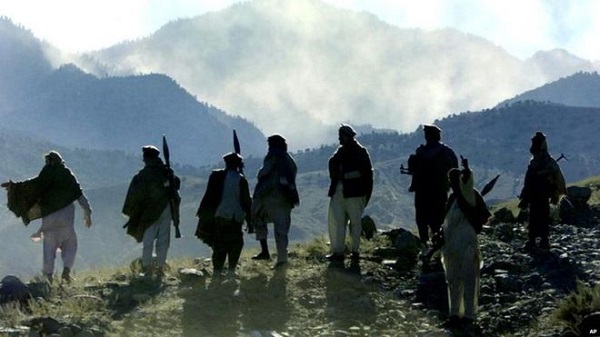By Dawood Azami
The Afghan Taliban say they have unleashed “special forces” in an increasingly bloody battle with fighters from the rival, so-called Islamic State (IS) group. The Taliban’s dominance and monopoly on insurgency in a region home to numerous local and foreign militant groups is being challenged by IS, which has been gaining some support. Who’s winning the war of the militants?
How many Taliban special forces
are fighting Islamic State?
According to Taliban sources, the special task force, part of the Taliban’s special forces command, was set up in early October and has more than 1,000 fighters – better equipped and trained than regular Taliban and with the sole aim of crushing IS.
Special ops teams are handpicked for their fighting skills and experience and are active in all provinces where IS has a current or potential presence – including Nangarhar, Farah, Helmand and Zabul. But Taliban special forces will deploy anywhere against IS, leaving other Taliban to fight Afghan and foreign troops.
Have many insurgents been killed?
When IS planned its expansion into Afghanistan, the Taliban quietly ordered their commanders to confront the group by “all means possible”. Since April, the Taliban and IS have attacked each other many times as they try to hold or take territory. IS cells, mostly led by disgruntled ex-Afghan Taliban commanders – as well as some militants from Pakistan and Uzbekistan – have been targeted.
Nangarhar, Helmand, Farah and Zabul provinces have seen most of the fighting, with hundreds of insurgents from both sides killed. Exact figures are not available but Taliban special ops units are thought to have killed dozens of IS fighters since October. For their part, IS has also killed dozens of Taliban, mainly in Nangarhar. They seek out Taliban whenever they can and have ambushed them many times. IS beheaded 10 Taliban fighters earlier this year in Nangarhar.
In June, the Taliban shadow governor for the province, Mawlawi Mir Ahmad Gul, was assassinated in Peshawar. It was believed that IS was behind the attack. For the time being, it seems that IS has been largely eliminated in the south and west of the country. But its small groups of fighters are active in eastern Afghanistan, especially Nangarhar and Kunar provinces. IS is also focusing on northern Afghanistan where it wants to establish pockets to link up with other Uzbek, Tajik, Chechen and Uighur militants and cross international borders with ease.
When did the two movements
start fighting?
The two groups declared war on one another in January 2015 after IS announced the establishment of its branch in “Khorasan”, an old name for Afghanistan and parts of neighbouring Pakistan, Iran and Central Asia. It was the first time that Islamic State, which has its roots in the conflicts in Iraq and Syria, had officially spread outside the Arab world.
IS, or “Daesh” as it is known by its Arabic acronym, was the first major militant group to directly challenge the authority of the Taliban’s founder, Mullah Muhammad Omar, who was regarded by the Taliban as Amir-ul Momineen (Leader of the Faithful) of the Islamic Emirate of Afghanistan.
Al-Qaeda’s leaders were given shelter by the Taliban leader and they had acknowledged his authority. But IS has been vocally opposed, with statements and propaganda videos questioning the legitimacy of the Taliban and accusing them of promoting the interests of Pakistan’s ISI intelligence agency.
Courtesy BBC News


